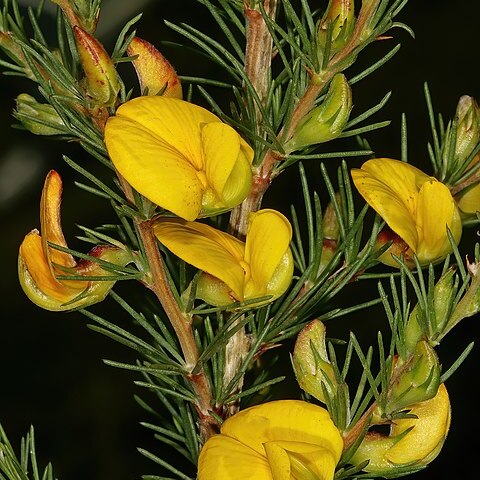Erect, spreading shrubs 1-2(-2.5) m tall, with rigid, straight branches. Young branches yellowish or reddish, glabrous or (on apical parts) sparsely sericeous; branch ends sometimes almost thorn-like. Leaflets 6-20 mm long, shorter and less hairy than in A. willdenowiana, but leaf bases similar to those in that species. Bracts and bracteoles subulate, 5-7 mm and 4-5 mm long, respectively. Pedicel 1.5-3 mm long. Calyx tube glabrous or with few hairs; lobes narrowly triangular (apices almost subulate), 3-4.5 mm long, glabrous. Petals bright yellow or standard back ± red. Standard blade 12;5-14 x 12.5-14 mm, short-sericeous on the back; the front as in A. willdenowiana basally with discshaped callosities. Wing blades 10-11 x 4-5.5 mm, glabrous. Keel similar to that in A. willdenowiana, 9.5-10.5 mm long, 3.5-4 mm broad. Pistil as in A. willdenowiana; ovules 4. Pod lanceolate-ovate, 15-18 x ±6 mm, almost straight (not upcurved apically).
Like A. willdenowiana but calyx glabrous or sparsely adpressed-hairy.

